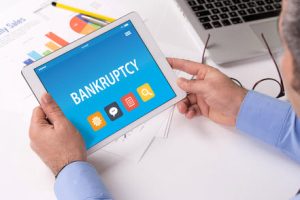Bankruptcy Filings Dip Slightly

According to the latest government statistics, distressed debtors have less money, owe less money, and are filing fewer voluntary bankruptcy petitions than they were a year ago.
Nationally, consumer filings dropped 6 percent in the latest filing tally. The average debtor had a $2,668 monthly income to pay $2,590 in monthly expenses. In 2015, both these figures were about 7 percent higher.
In Indiana, bankruptcy filings fell by 9 percent.
Types of Consumer Bankruptcy
Chapter 7 bankruptcy is normally a good option for families who owe more than $10,000 in unsecured debt, because that is realistically more money than most people can afford to repay. The list of dischargeable obligations includes:
- Medical Bills: Even with health insurance, medical bills often overwhelm a family, which is why these expenses are one of the leading causes of bankruptcy.
- Credit Cards: Like payday loans, credit cards are secured only by a future promise to pay, which is why credit card debt is one of the most frequently-discharged obligations.
- Back Taxes: Income taxes are dischargeable if the taxpayer did not commit fraud or tax evasion, the tax is at least three years old, the returns have been on file at least two years, and the debt has not been assessed in the last 240 days.
- Small Business Administration Loans: Most businesses fail within their first few years, and if your business is no longer in operation but the SBA loan is still outstanding, bankruptcy should be a consideration.
Bankruptcy eliminates the debt but not the collateral consequences of debt. So for example, if a taxing authority has filed liens on outstanding taxes, those liens remain even if the underlying debt is discharged.
Procedurally, after the debtor takes a debt counselling class, an attorney files a petition and schedules. About six weeks later, the debtor meets with the trustee (person who oversees the bankruptcy on behalf of the judge) to review the paperwork, and about six months after that, the judge typically signs the discharge order.
Chapter 7 debtors must pass the means test, which means their income must be lower than the average income for that geographic area.
In Chapter 13 cases, the debtor’s income usually needs to be slightly above average, since the debtor must make monthly debt consolidation payments. The debtor has up to five years to pay any arrearage on home mortgages, auto loans, and other secured debts.
The trustee also has a different role in Chapter 13 cases, because instead of simply reviewing paperwork, the trustee evaluates the debtor’s monthly income and expenses. The debtor ten remits any excess income as the debt consolidation payment.
Chapter 13 is a good option for people who are more than a month or two behind on secured debts.
Benefits of Bankruptcy
The automatic stay is one of the most significant benefits of bankruptcy. In most cases, moneylenders cannot take any adverse action against debtors as long as the case is pending. That includes lawsuits, repossessions, foreclosures, and collection phone calls.
Chapter 7 debtors receive a fresh financial start in only a few months, and Chapter 13 debtors have up to five years to pay off any arrearage. Furthermore, Chapter 13 debtors may also be eligible for cramdowns, which means that their secured loans are reduced to the current fair market value of the secured property.
Rely On Experienced Attorneys
Chapter 7 and Chapter 13 are the two main types of consumer bankruptcy. For a free consultation with an experienced bankruptcy attorney in Chicago, contact the Bentz Holguin Law Firm, LLC. We routinely handle matters in both Illinois and Indiana.
Resource:
ibj.com/articles/64552-indiana-bankruptcy-filings-take-downward-turn


